What is cryptocurrency mining
In the cryptocurrency world, mining is the process of creating blocks in a blockchain and paying rewards to people who invest their computing resources in the process
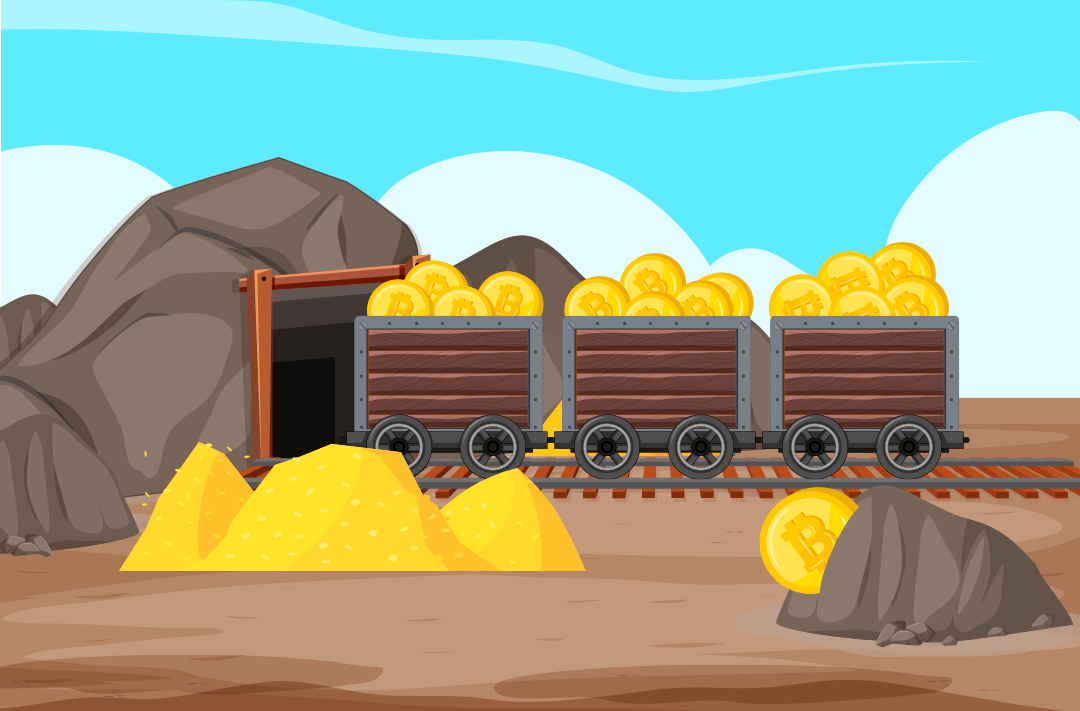
15.11.2021
4051
7 min
1
. The word comes from the real economy: in a traditional industry, mining is the extraction of minerals. The largest blockchains today, Bitcoin and Ethereum, as well as their numerous forks, are based on mining.
To get new bitcoins, you need to spend electricity and computing resources. Therefore, cryptocurrency mining is compared to mining gold or other precious metals. The word “miner” refers to the people engaged in mining, and often to the specialized mining devices themselves.
Blocks in the Bitcoin network, in which user transactions are “packed,” are created approximately once every 10 minutes, that is, 144 blocks per day. In other cryptocurrencies, the interval between blocks is shorter: for example, in Litecoin, mining each block takes about 2,5 minutes, which means that transactions are confirmed four times faster.
Mining is necessary for the blockchain to function as an independent payment system, controlled only by its participants: without it, transactions will not be confirmed. If there are too few miners, the blockchain will become vulnerable to all kinds of attacks and lose its attractiveness.
The economic basis of mining
Let's look at the economic model of mining based on Bitcoin, the first cryptocurrency launched in January 2009. Bitcoin is valued for the fact that the schedule for releasing new BTC is known in advance. Only 21 million bitcoins can be mined in more than 140 years, and a limited supply is always more valuable.
Bitcoin creator Satoshi Nakamoto developed the so-called “deflationary” model. Initially, the miner who created it received 50 BTC for each block. Every four years (after 210 000 blocks) the block reward is halved. This event is called halving the reward. In 2012, miners began to receive 25 BTC per block, 12,5 BTC in 2016, and 6,25 BTC in 2020. The next halving will happen around May-June 2024, and the reward for miners will drop to 3,125 BTC. Thus, the number of bitcoins coming into circulation is gradually decreasing, which means a deficit is created, leading to an increase in the rate.
Another piece of good news: miners are rewarded not only for creating a block but also for each transaction included in the block. Although the fee is small for a single transaction, miners will receive another 0,1 - 0,9 BTC for several thousand transactions in one block. Thus, in the fall of 2021, BTC miners will collectively earn more than $40 million per day.
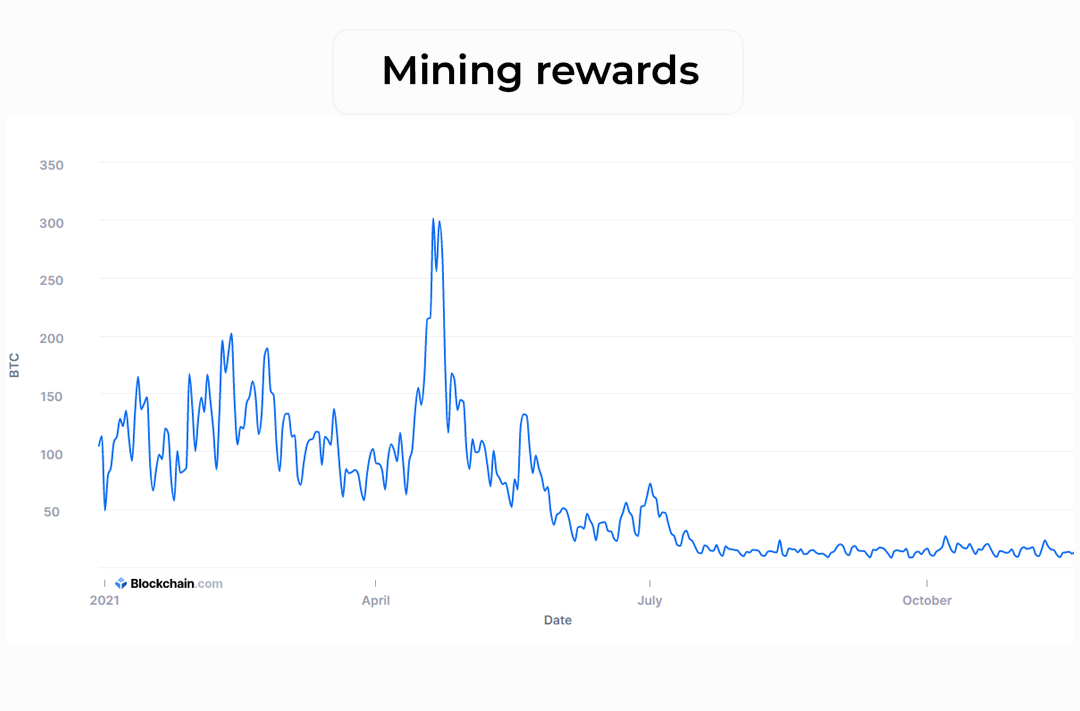
How does mining difficulty work?
The basis for regulating the inflow or outflow of miners' capacities and keeping the interval between blocks around 10 minutes is the so-called “difficulty.” In cryptographic terms, difficulty controls the number of zeros (empty digits) in a cryptographic hash lookup task that signs off a block. In fact, it determines the average number of calculations that need to be spent to create a block, and hence the power consumed.
Bitcoin's difficulty is recalculated every 2016 blocks (about 2 weeks). If more miners come into the network during that period, the difficulty goes up, and if miners leave, the difficulty goes down.
Immediately after Bitcoin's launch, the difficulty was equal to 1, and by November 2021 it had risen above 22 trillion units with the computing power of miners at over 160 hashes per second! Not even all the supercomputers in the world can calculate that many hashes.
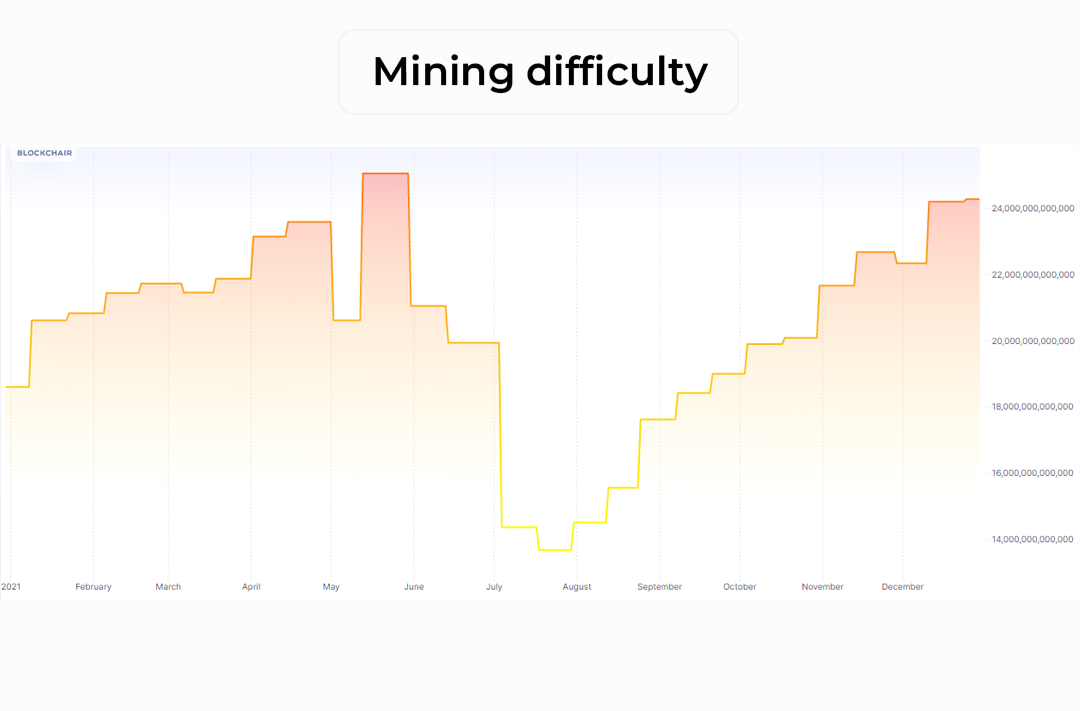
Sourse: blockchain.com
Profit distribution
It would seem that $40 million a day is a very impressive amount. But this pie is divided among a huge number of miners, from “home farmers” with a few devices to industrial miners who have thousands of “asics” running in huge hangars. Millions of people around the world are employed in the mining industry.
Only 144 blocks are mined on average per day, though that number can vary by a few percent in any direction due to randomness. But the protocol does not divide the reward per block in any way, even if a million people are mining: it goes entirely to the one miner who finds the right hash first. In such conditions, small miners cannot compete with large ones - with mining on a single computer, one would have to wait for the cherished block for centuries.
How to mine bitcoins without having millions to buy equipment? To get at least some reward, private miners have to join together in so-called “pools.” Basically, a pool is a server that gives miners tasks to calculate hashes, and when a block is found, it distributes the profit between them, depending on the share of each participant. The pool owner takes a commission from the miners, usually about 1-2% of the payments.
If a pool gathers enough computing resources, it produces blocks regularly, which means that miners connected to it receive a stable income. Now there are more than a dozen large pools in the world, as well as a number of commercial organizations with tens of thousands of asics in their parks. That is why Bitcoin critics point to the danger of centralization.
What hardware do miners use?
The first miners got bitcoins on the processors of ordinary PCs. But when in 2010-2011 the exchange rate began to increase, mining started to bring in a tangible income. Programs were developed to mine on the shader processors of video cards, which increased the performance by hundreds of times. In 2013, the “mining revolution” began: specialized devices, ASIC-miners (“asics”), entered the market. They are much more efficient than processors and graphics cards because they can only count hashes with the same algorithm, but they are thousands of times faster. Now only wealthy people can afford to maintain ASIC-miners because to make sufficient profit one needs to buy equipment worth tens of thousands of dollars and provide tens of kilowatts of power.
Ethereum creators developed a hashing algorithm with high RAM requirements, which limited the performance of ASIC chips. Ethereum mining is still mostly done on video card farms. There are also ASIC miners, but they are too expensive and do not give significant profit.
The multiple increases in the price of ETH in 2017 and 2021 generated waves of demand for video cards — during such periods they are sold several times more expensive than normal market prices. Therefore, despite the growth of the exchange rate, the payback of farms on video cards exceeds six months, and taking into account the constant increase in difficulty, this period stretches even more. In the case of a fall in the price of ETH, farms can pay off only after years.
There is also so-called "cloud mining," where industrial miners rent out their power to retail customers, who can earn income without buying equipment. But this is far from being charity: the rental price includes equipment maintenance, electricity, and staff salaries.
More often than not, cloud mining is less profitable in the long run than just buying cryptocurrency on an exchange. And many cloud mining services turn out to be regular pyramids: they do not have any equipment, and they pay income to “old” customers from the proceeds of new ones, and when the inflow of new customers decreases, the service simply closes.
Mining profitability
How not to get trapped and really make money on mining? First of all, you should arm yourself with numbers and calculate all expenses:
- The cost of the equipment, its depreciation, and residual value in a year.
- Multiply the power consumption of the whole farm by the cost of electricity in your region.
- Overhead costs, such as room, installation, cooling, maintenance, etc.
A calculator will help you calculate the approximate profitability of mining. It is enough to enter the hash rate of the equipment and the electrical power consumed by it. The calculator will estimate approximate changes in the exchange rate and difficulty and will give a profitability forecast for a given period. However, this figure does not guarantee income at all: in mining, as in any business, there are many random factors.
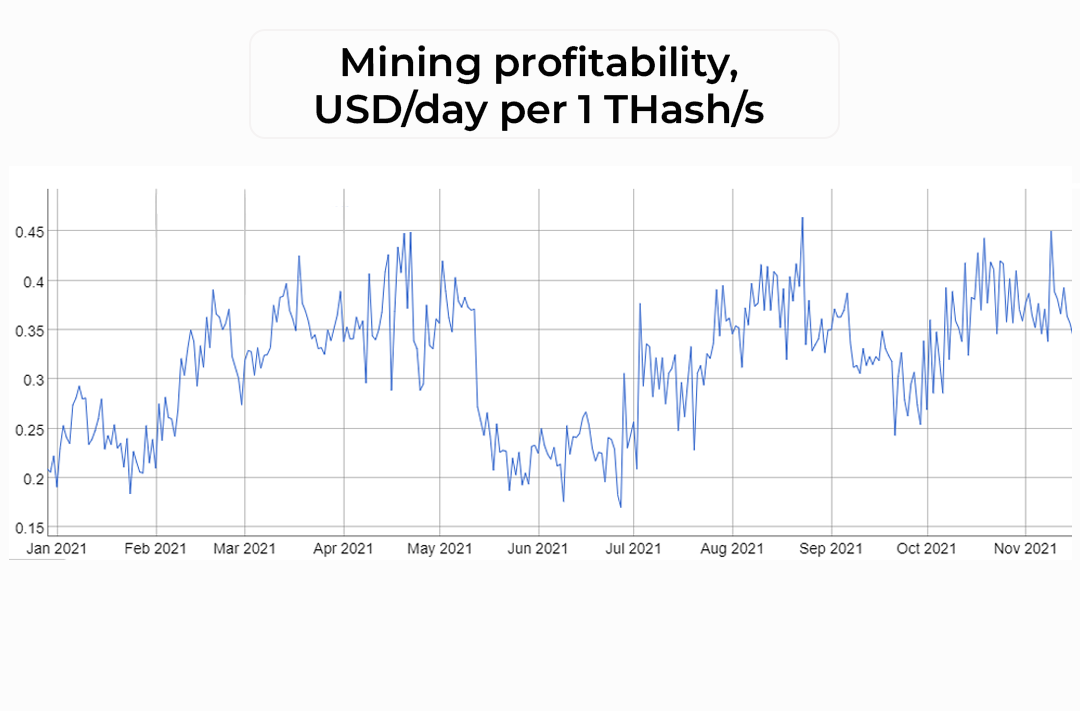
Energy and ecology are the main problems of mining
Rewards for mining encourage more and more people to buy equipment and join the process. The total mining capacity of bitcoin mining now corresponds to the energy consumption of an entire country with a population of tens of millions of people. The impact of mining on the environment has attracted the attention of many governments, and they are introducing higher electricity tariffs for miners, and sometimes regulators even ban mining altogether.
For this reason, more environmentally friendly methods of supporting blockchains are attracting more and more attention. Ethereum, for example, has been working for several years on a PoS (Proof-of-Stake) algorithm, where blocks are created without a race of computing power. This will hit ETH miners hard since mining in other blockchains will not be able to provide close returns. Most of the video cards will enter the secondary market and prices will drop many times.
Useful material?
Basics
Why Satoshi Nakamoto’s technical manifesto for a decentralized money system matters
Oct 31, 2022
Basics
Experts evaluated the development prospects of the new ecosystem and the investment attractiveness of its token
Oct 20, 2022
Basics
How to track fluctuations correctly and create an effective income strategy
Sep 13, 2022
Basics
Review of the most profitable offers from proven trading platforms
Aug 29, 2022
Basics
The Ethereum Foundation team has published a breakdown of major misconceptions about the upcoming network upgrade
Aug 18, 2022
Basics
What benefits the exchange offers, and what else is in the near future
Aug 4, 2022









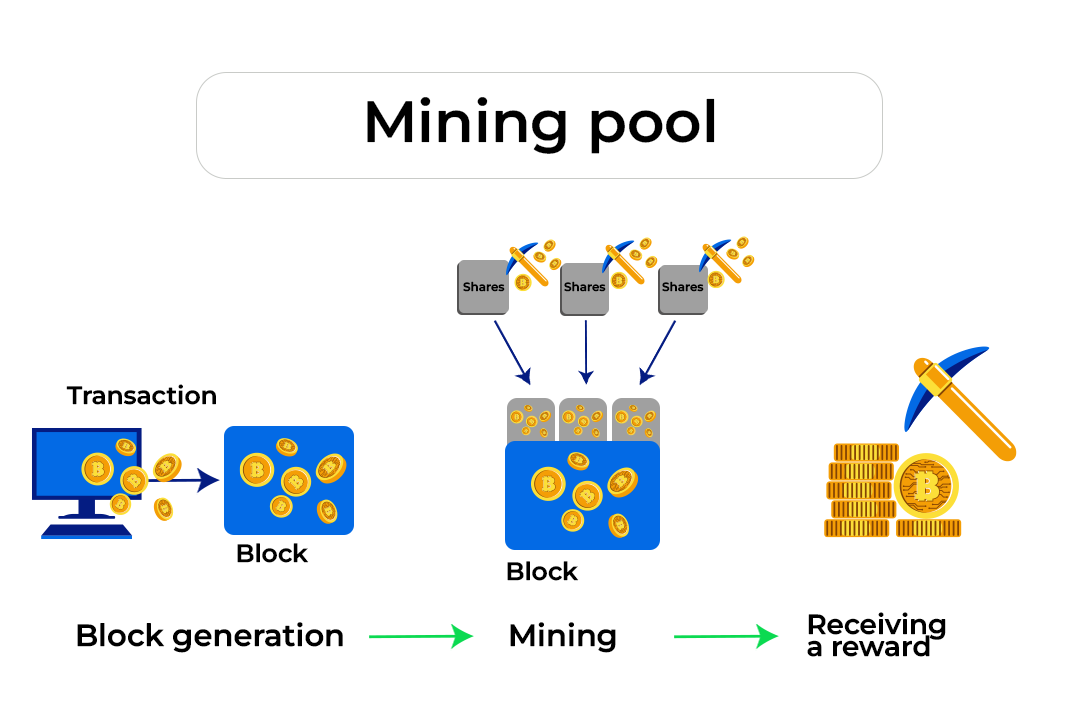
 Telegram
Telegram  Twitter
Twitter